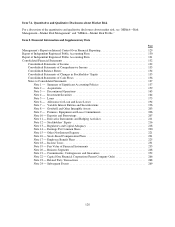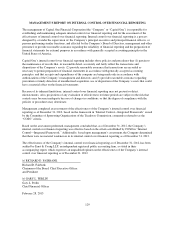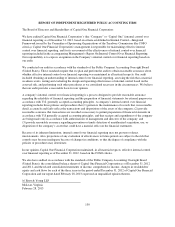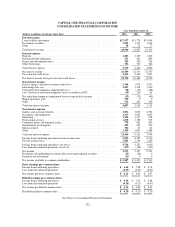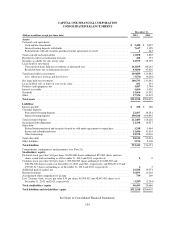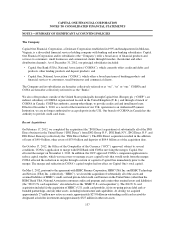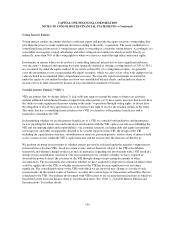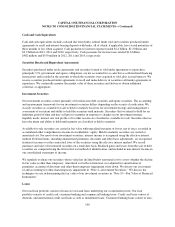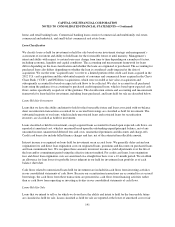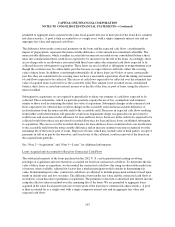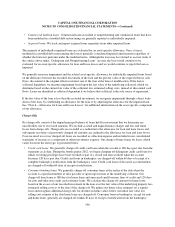Capital One 2012 Annual Report Download - page 157
Download and view the complete annual report
Please find page 157 of the 2012 Capital One annual report below. You can navigate through the pages in the report by either clicking on the pages listed below, or by using the keyword search tool below to find specific information within the annual report.CAPITAL ONE FINANCIAL CORPORATION
NOTES TO CONSOLIDATED FINANCIAL STATEMENTS—(Continued)
Operations and Business Segments
Our principal operations are currently organized for management reporting purposes into three primary business
segments, which are defined primarily based on the products and services provided or the type of customer served:
Credit Card, Consumer Banking and Commercial Banking. The operations of acquired businesses have been
integrated into our existing business segments. The acquired ING Direct business is primarily reflected in our
Consumer Banking business, while the business acquired in the 2012 U.S. card acquisition is reflected in our Credit
Card business. Certain activities that are not part of a segment, such as management of our corporate investment
portfolio and asset/liability management by our centralized Corporate Treasury group, are included in the “Other”
category.
•Credit Card: Consists of our domestic consumer and small business card lending, national small business
lending, national closed end installment lending and the international card lending businesses in Canada and
the United Kingdom.
•Consumer Banking: Consists of our branch-based lending and deposit gathering activities for consumers and
small businesses, national deposit gathering, national auto lending and consumer home loan lending and
servicing activities.
•Commercial Banking: Consists of our lending, deposit gathering and treasury management services to
commercial real estate and commercial and industrial customers. Our commercial and industrial customers
typically include companies with annual revenues between $10 million to $1.0 billion. In the first quarter of
2012, we re-aligned the loan categories reported by our Commercial Banking business and the loan product
type included within each category.
The results of our individual businesses are reported on a continuing operations basis and prepared based on our
internal management reporting process, which reflects the manner in which management evaluates performance
and makes decisions about funding our operations and allocating resources. We provide the details on the
allocation methodologies and accounting policies used to derive our business segment results and a reconciliation
of our total business segment results to our reported consolidated results in “Note 20—Business Segments.”
Basis of Presentation and Use of Estimates
The accompanying consolidated financial statements have been prepared in accordance with generally accepted
accounting principles in the U.S. (“U.S. GAAP”). The preparation of financial statements in conformity with
U.S. GAAP requires management to make estimates and assumptions that affect the amounts reported in the
consolidated financial statements and related disclosures. These estimates are based on information available as
of the date of the consolidated financial statements. While management makes its best judgment, actual amounts
or results could differ from these estimates.
Principles of Consolidation
The consolidated financial statements include the accounts of Capital One Financial Corporation and all other
entities in which we have a controlling financial interest. We determine whether we have a controlling financial
interest in an entity by first evaluating whether the entity is a voting interest entity or a variable interest entity
(“VIE”). All significant intercompany accounts and transactions have been eliminated. Certain prior period amounts
have been reclassified to conform to the current period presentation. Effective January 1, 2010, we prospectively
adopted two accounting standards related to the transfer and servicing of financial assets and consolidations that
changed how we account for securitized loans. The adoption of these accounting standards resulted in the
consolidation of substantially all of our securitization trusts. We recorded an after-tax charge to retained earnings on
January 1, 2010 of $2.9 billion for the net cumulative effect of adopting these accounting standards.
138


